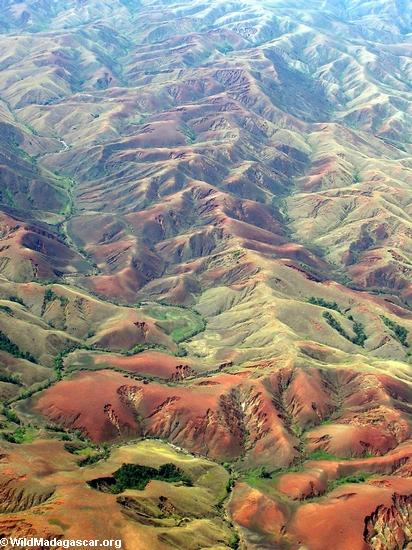- A new study provides further evidence that humans drove large-scale landscape changes in Madagascar after they brought cattle to the Indian Ocean island around 1,000 years ago.
- Analyzing the chemical composition of stalagmites in a cave in northwestern Madagascar, scientists from MIT and the University of Massachusetts at Amherst found an abrupt shift in carbon isotope ratios, indicating a sudden change in vegetation structure.
- This shift in vegetation cover, coupled with unrelenting hunting pressure, drove all of Madagascar’s megafauna — including gorilla-sized lemurs and pygmy hippos — to extinction.
A new study provides further evidence that humans drove large-scale landscape changes in Madagascar after they brought cattle to the Indian Ocean island around 1,000 years ago.
Analyzing the chemical composition of stalagmites in a cave in northwestern Madagascar, scientists from MIT and the University of Massachusetts at Amherst found an abrupt shift in carbon isotope ratios, indicating a sudden change in vegetation structure.
“The team found that around 1,000 years ago, both stalagmites’ calcium carbonate composition shifted suddenly and completely, from carbon isotope ratios typical of trees and shrubs, to those more consistent with grassland, within just 100 years,” according to a press release.
Oxygen isotope data from the same stalagmites shows that rainfall and climate remained “relatively stable”, according to the study, which is published in the journal Quaternary Science Reviews.
“You’d think stalagmites in a cave are insensitive to what’s going on in the landscape above them,” said study author David McGee of MIT. “But because they’re basically fossilized groundwater deposits, precipitated in very regular layers, they’re a fairly sensitive recorder of climate and ecosystem changes.”
The findings lend further support to the prevailing theory that humanity’s use of fire triggered large-scale transition of Madagascar’s forests to drier woodlands and grasslands. Today most of Madagascar’s forests are limited to the northern and eastern parts of the island. Malagasy continue to burn land for cattle grazing, contributing to the island’s high rate of deforestation.

This shift, coupled with unrelenting hunting pressure, drove all of Madagascar’s megafauna — including gorilla-sized lemurs and pygmy hippos — to extinction.
Threats to Madagascar’s wildlife have not diminished: roughly 90 percent of the island’s lemurs are considered at risk of extinction. Hunting and habitat conversion remain major threats.
CITATION: Stephen J. Burns, Laurie R. Godfrey, Peterson Faina, David McGee, Ben Hardt, Lovasoa Ranivoharimanana, Jeannot Randrianasy. Rapid human-induced landscape transformation in Madagascar at the end of the first millennium of the Common Era. Quaternary Science Reviews, Volume 134, 15 February 2016. Pages 92-99














